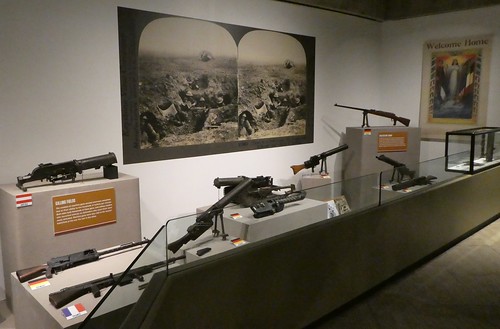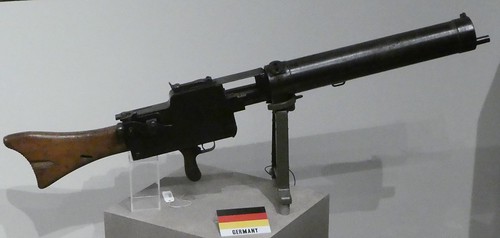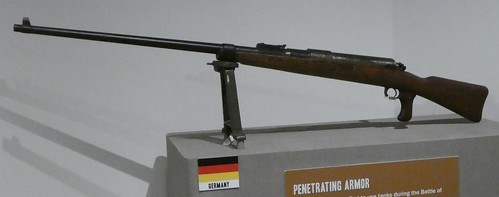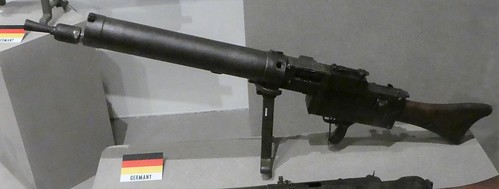While the machine gun—a gun capable of sustained rapid fire—was invented in the nineteenth century, it revolutionized warfare in the twentieth century. The World War I (1914-1918) battlefields were dominated by machine guns. The Ohio History Center in Columbus, Ohio has a display of World War I machine guns.
According to the display:
“The creation of machine guns caused enormous casualties due to their ability to fire hundred of bullets per minute. Both sides built thousands of these guns, and military leaders who launched attacks on defenders who used them were easily defeated. Machine guns were also vital to the newest battlefield of the era: the war in the skies.”
According to another display:
“The advanced weapons of World War I were far deadlier than those used in previous conflicts. Military leaders hadn’t developed new tactics to cope with the new weapons. As a result, both sides built elaborate defenses of trenches from the North Sea to the Swiss border. The conditions were dirty and crowded. Soldiers had to deal with lice, fleas and rats as well as bad food and water.”










 Tanks, which were immune to machine gun and rifle fire, were first used by the British during the Battle of the Somme in September 1916. In response, the Germans built the Mauser 13mm anti-tank gun. The Tankgewehr M1918, shown above, could pierce the armor of British and French tanks.
Tanks, which were immune to machine gun and rifle fire, were first used by the British during the Battle of the Somme in September 1916. In response, the Germans built the Mauser 13mm anti-tank gun. The Tankgewehr M1918, shown above, could pierce the armor of British and French tanks.


More World War I museum displays
Ohio History Center: World War I (photo diary)
Ohio History Center: World War I posters (photo diary)
Veterans Memorial Museum: World War I (Photo Diary)
Museum of Flight: World War I German airplanes (photo diary)
Museum of Flight: World War I Sopwith airplanes (photo diary)
Museum of Flight: World War I French, British, and American airplanes (photo diary)
Museum of Flight: World War I memorabilia (photo diary)
Air Force Museum: World War I airplanes (photo diary)


